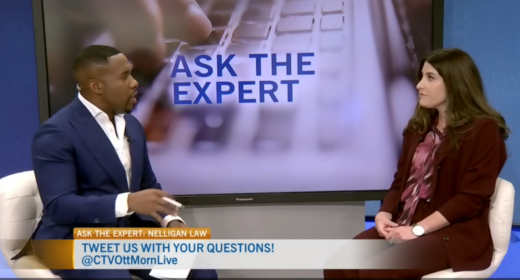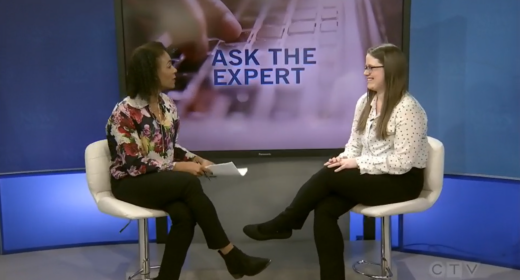There are two certainties in any plan to protect your estate from creditors: you must carry out the plan when you are alive; and your estate cannot avoid paying debts already owed by you before you have put your plan in place.
As an example, if a bank has a judgement against you for a debt owed, any estate plan to avoid payment of that debt would contravene the Fraudulent Preferences Act of Ontario and, possibly, the Bankruptcy and Insolvency Act of Canada. The debt could then be recovered by your creditors from the estate or from the person to whom the assets had been transferred prior to death.
There is also a third certainty: if any debt is owed to the Canada Revenue Agency (CRA), it has the legislative authority both to attack any plan to avoid payment of that debt, as well as to assess any beneficiary or the person who received a benefit from the plan.
There is a statutory requirement in any estate administration that the debts of the deceased must be paid from the estate assets before any payment is made to the beneficiaries. If these debts are not paid and the beneficiaries are paid instead, then both the executor and the beneficiaries may become personally liable for these debts. If there are not enough assets in the estate to pay the deceased’s creditors, the creditors are then usually paid from the existing estate assets on a pro rata basis with the estate beneficiaries receiving the balance (if anything).
The most common situation when it makes sense for a person to implement a plan to reduce the amount of estate assets available to creditors is when the person has guaranteed loans to third parties and there is a possibility these loans may be in default at the person’s death. While the reward of any plan is to protect your estate from creditors, the risk is that the plan may cause more problems than it solves.
The simplest plan is to ensure all life insurance policies and registered plans (RRSPs, RIFs, TFSAs, LIFAs, etc.) have a designated named beneficiary (or beneficiaries). These assets will then pass directly to the named beneficiaries rather than to the estate. The risk is when the named beneficiaries die before you. In such a case, payment is then made to your estate. If this is a plan you have in place or hope to put in place, you must either continuously monitor and update the beneficiaries’ designation, or create an insurance trust to receive these assets at your death and to pay these assets out to the beneficiaries named in the trust. Creation of an insurance trust should not be undertaken without clear professional advice from your lawyer and accountant.
Purchasing one or more annuities is another option, in that it removes or transfers assets (money) from you to an insurance company or trust company (depending on the length of time you wish your annuity to continue). The company will then guarantee you a regular periodic payment for a designated period of time (up to your lifetime or the lifetime of a spouse). At the end of the contract, the asset is used up. There are some annuities that will make a payment back to an estate if the annuitant does not live for a fixed period of time, or for some other reason set out in the contract.
The risk in purchasing an annuity is that currently, with interest rates so low, the amount of the periodic payments a company would agree to make might be lower than you would need to maintain your current and future lifestyle, as well as possibly fund contingent expenses.
Gifting or transferring assets during a person’s lifetime is also a way to reduce the value of that person’s estate and therefore, the assets available to pay the estate’s creditors. The risk, however, is that the person making the gift of transfer is left with fewer assets to maintain his or her lifestyle through to death. The secondary risk is the gift of transfer may be considered by a creditor as a sham and may be attacked by the creditor either before or after the person’s death.
Transferring an asset into joint ownership prior to death is a popular way to remove an asset from an estate. On the deceased’s death, the ownership of that asset will pass to the surviving joint owner. However, there are several risks. The CRA treats a transfer of any part of an asset as a disposition. If the asset has accrued capital gains, then the transfer to the joint owner will trigger taxes to the donor on the capital gains immediately on the transfer.
More recently, the Supreme Court of Canada has held that a transfer of an asset into joint ownership simply to avoid estate creditors is essentially void, and the surviving joint owner holds the asset in trust for the estate and, therefore, the creditors. Further, if the transfer to a joint owner is coupled with a spoken understanding that the surviving joint owner will disburse the assets in accordance with the donor’s stated (unwritten) wishes, then you shouldn’t count on it. Lawyers can make a comfortable living litigating these types of transfers.
If a person is 65 years or older, he or she can establish an Alter Ego Trust or a Joint Spousal Trust (collectively called a “Trust”). That person and his or her spouse must be the sole primary beneficiary (or beneficiaries) of the Trust during his/her/their lifetime(s), and may also be the trustee(s). The Income Tax Act allows this type of transfer because the Act will tax the person and not the Trust on the income earned by the Trust to the date of that person’s death. When the Trust is established, the person (the “donor”) can then transfer such assets as he or she wishes to the Trust. The effect of such a transfer to a Trust is that the asset moves from the donor’s ownership to the Trust’s ownership. At the donor’s death, the assets are then transferred to the secondary beneficiaries who have already been set out in the Trust document and who are normally the same beneficiaries who would inherit through the donor’s Will.
The risks in establishing and transferring assets to such a trust must be considered. There is an income tax risk. When the Income Tax Act was amended in December 2014, it stated income taxes on capital gains arising at the donor’s death are firstly owed by the primary beneficiary’s estate and secondarily owed by the Trust’s secondary beneficiaries. This can become a serious problem when a Trust is established for a spouse of a second marriage. It can also become a problem when the purpose of the Trust was to avoid paying estate creditors.
Other risks relating to the establishment and maintenance of a Trust is the cost of the yearly preparation of Trust income tax returns and filings required by the Income Tax Act.
Protection of your estate from creditors means ensuring there are few, if any, assets in your estate at your death. Several of the more common methods to achieve this result have been discussed in this article. Each carries its own risks and none should be carried out without a thorough discussion with your lawyer and accountant of all of the rewards and pitfalls of any plan.
John Peart is a partner with the Ottawa law firm of Nelligan O’Brien Payne LLP (www.nelligan.ca) and part of its Wills and Estates Group. John is Certified as a Specialist (CS) in Estates and Trusts Law by the Law Society of Upper Canada and is also a member of the International Society of Trust and Estates Practitioners.
[This article was originally published in the November/December 2015 edition of Fifty-Five Plus Magazine.]
Check out other Wills and Estates articles written by our lawyers.


